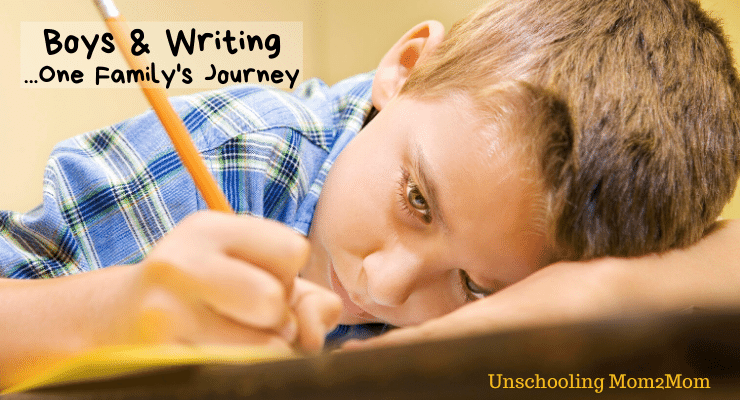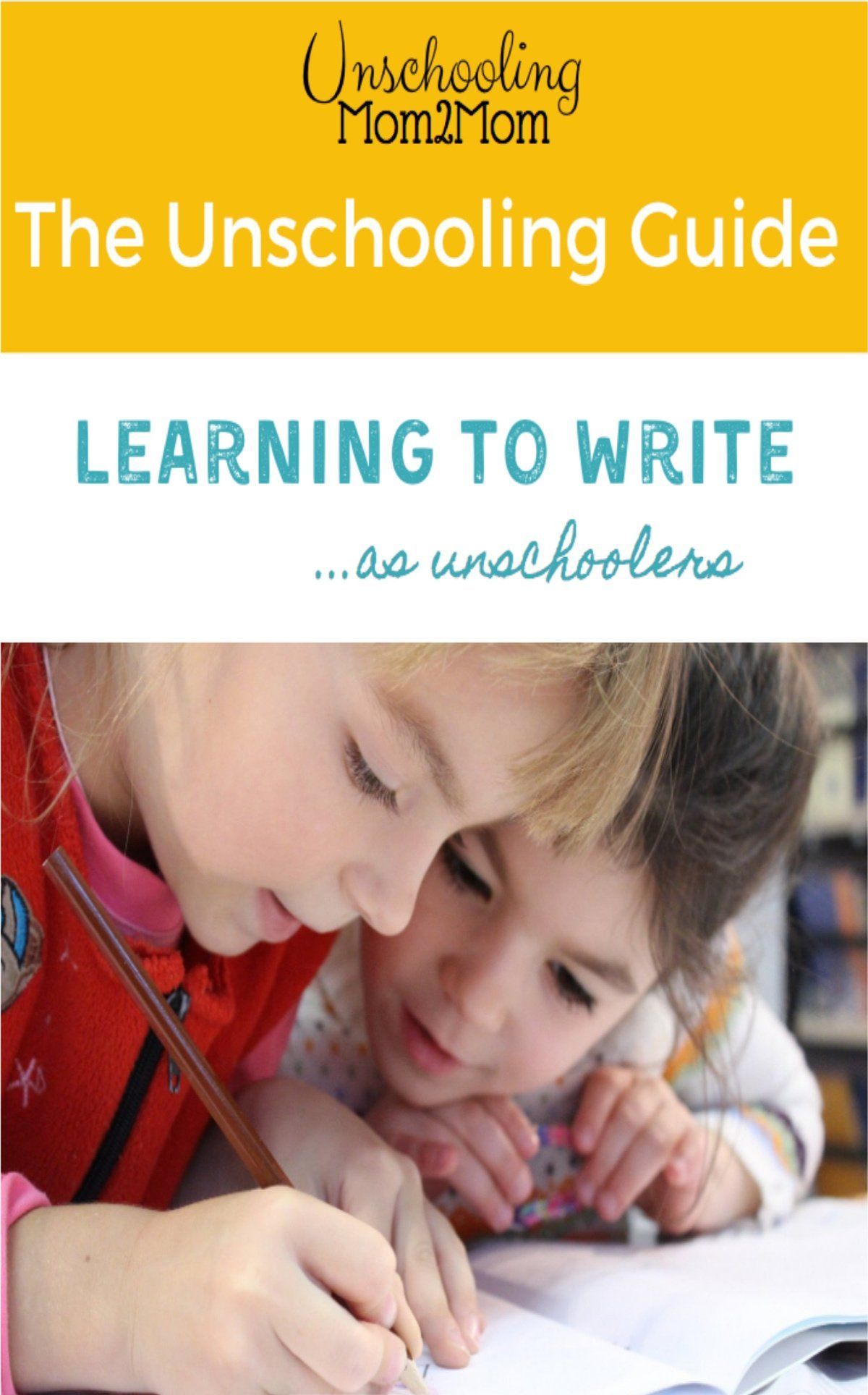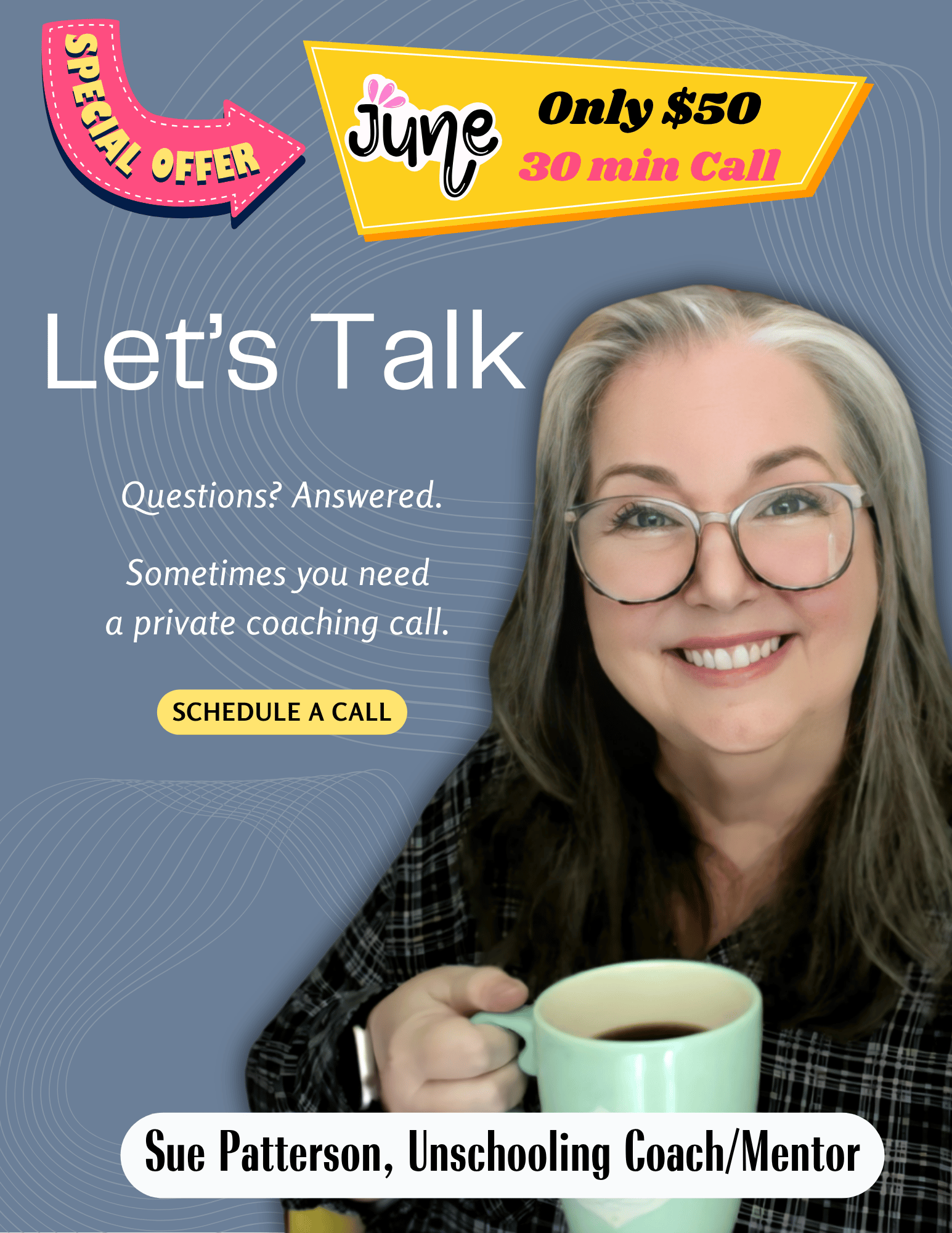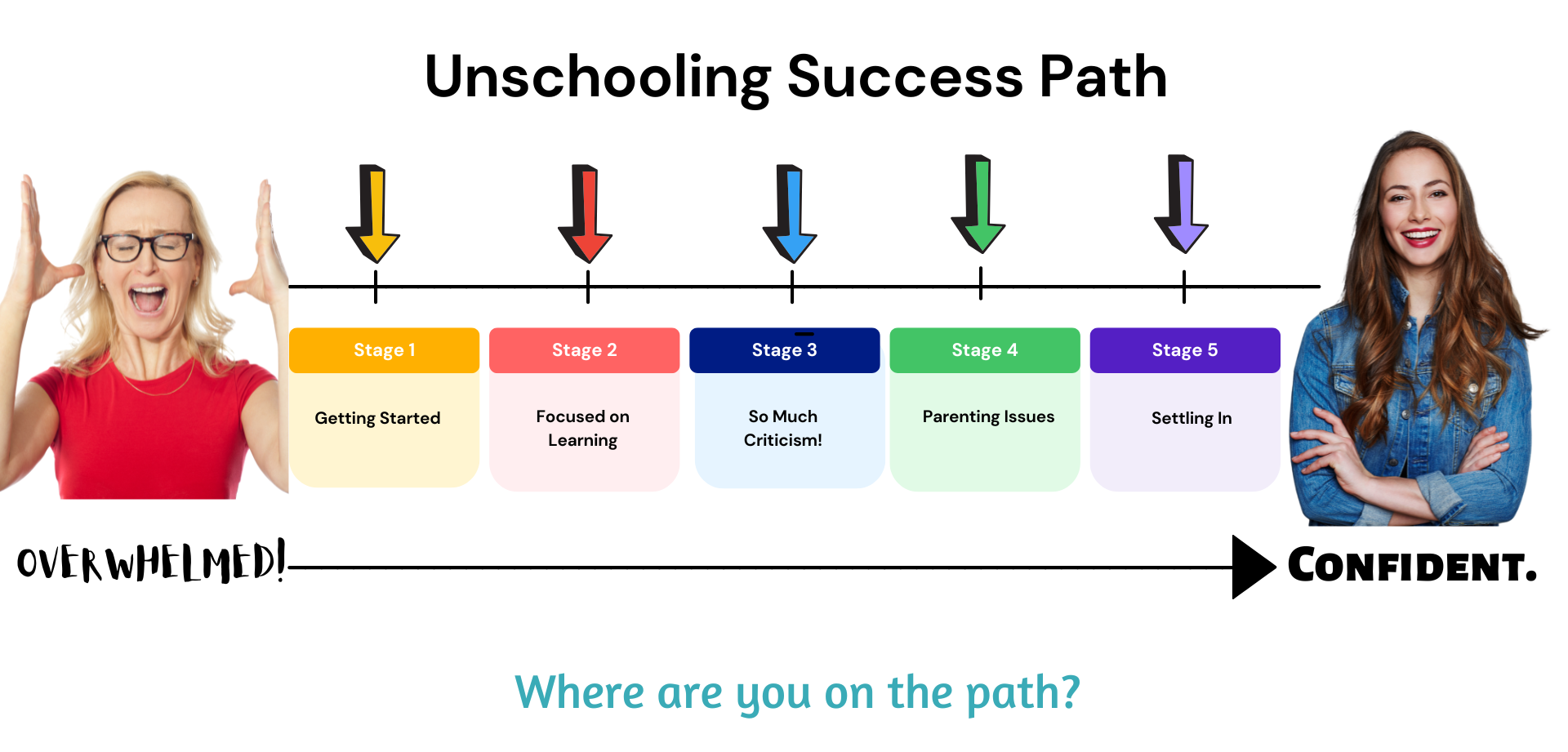Boys and Writing
Why are those two words never paired together? I’ve been reading about families who try to create environments that might coax their sons to write more. So I think it’s time to share how we dealt with writing, when my son was growing up.
I never really paid a lot of attention to Michael’s penmanship or his writing skills when he was in school. Maybe because he was only there for Kindergarten and First Grade!
I hadn’t read a lot about homeschooling before we started, but we dove in after Michael completed first grade. I didn’t know about unschooling yet, so we purchased what was called, “School in a Box” by Calvert from Baltimore, Maryland. Purchasing this prepackaged curriculum made me feel like I could tackle this homeschooling thing. I’d just spice it up and make it fun!
Handwriting
Instead of evaluating all of Calvert’s materials, I really want to talk about the writing component. It was all about handwriting. One day a week, or maybe it was every other week, they’d focus on creative writing. But handwriting – that was daily! I didn’t really understand why Michael writhed so when I asked him to pick up that Number 2 pencil. I didn’t understand why he didn’t want to artistically shape the letters the way they had them in the book. I had been awarded the oh-so-prestigious Handwriting Award in the 5th grade – clearly we were not on similar paths. So I wrote to the teacher (yes, my confidence was so low that I felt we should have an expert guiding us for second grade!) I asked her if he could write his own stories and we’d turn in those paragraphs.
Quick answer: Nope! Certain letter formations were being addressed, and, why wasn’t he happy writing about the little red car all week long? We may have continued with it for a 1-2 weeks – bribing, begging, scolding, demanding.
I was not happy with the way either of us were acting. So I declared a truce.
I decided right then and there that I was going to be on Michael’s side. I knew that if we continued on this path, we would simply be duplicating the schoolish ways I was trying to help my son avoid! If we kept it up, I could make him absolutely HATE writing. As a writer myself, this was simply unacceptable! I told him we weren’t going to do the writing part anymore. He was relieved. We would go ahead and turn in whatever he wanted to write about, and we’d take whatever grade she wanted to give. No biggie.
But it was a biggie. On multiple levels. The teacher was unhappy that we weren’t complying. Michael was unhappy because he still had to write. It was never about the little red car at all. He simply wasn’t developmentally ready to do the physical work of writing. He gripped tightly, when he should loosen. His fingers worked down toward the lead. His frustration with all of it increased. He started to cry.
Usually, I would get mad that he wasn’t cooperating. I had two younger kids that were quite a handful, and he was my oldest. In retrospect, I’m saddened to think of the pressure I put on him to “be a big boy,” when he was still a very little boy. I know I was just trying to manage, but sometimes our parenting techniques aren’t that great when we’re in the thick of it. But on this day, something changed. I looked out the window of his room. The snow was falling and collecting on the tree branches. Our Alaskan home felt very far from Calvert in Baltimore.
It was at that moment, I felt the shackles of school fall away.
We weren’t going to turn in writing, hoping to squeak by with her approval and a passing grade. We weren’t going to turn in any writing at all! Michael looked at me and grinned. I picked up the pencil and snapped it in two. Done!

Instead, we picked up a book and started reading together. He reminded me of the “book reports” he did in school. The teacher mimeographed (it was the 90’s!) a piece of paper. They had to write in the title, the author, check boxes about liking or disliking it. Maybe they had to write one sentence. It was, after all, first grade. He was playing with his Fimo clay while we were talking and reading. He asked if he could make something representational out of clay for every book he read. And that’s what he did. We had a bunch of classics that had been adult literacy books on sale at the bookstore. He loved that he could read those books – and every other page had a picture! He made a bowl of porridge for Oliver Twist, a spear for Moby Dick, a small boat for Kidnapped – all out of clay. He set them on his shelf and could easily see how many books he had read.
Creative Writing
Then we decided to try something new. Michael was full of imaginary stories he wanted to create! But the mechanics of handwriting made it impossible to get any of it down on paper. So we decided to do dictation. I chose an italicized font that looked most like handwriting from the computer, in hopes that that would help him be able read the cursive writing in letters from Grandma and others. Then we began creating stories. He would start telling me about the main character and I’d begin typing. When he started to slow, I’d ask him to describe the character – what was he wearing, how did he feel, what made him do that? I told him that sometimes when we write, we have to really describe the characters and the environment, so the reader can feel like they’re there. And that’s what he did. I tried hard to let him just enjoy the flow of creating the story, with very little interference from me. In retrospect, I think I could have interjected even less. We did this for a while, and still have some of those early stories.
Later On…
Life got busy, with three kids, and volunteer work. After a while, Michael preferred to play video games or hang out with friends instead of our dictation time. Truthfully, I probably wasn’t making time for it much anymore. He was off having fun.
Years passed. Michael continued to read, but I never asked him to write. Occasionally, I’d plunge my hands into dish water and ask him to start a grocery list for me. He wrote thank you notes to Grandma for Christmas and birthday gifts. At first, we used a program called Start Write. I could write out what he dictated, and then print it with dotted lines that he could trace. If you use a felt tipped marker or a sharpie, no one would even know he had traced the letters! It looked just like a perfect little thank-you note! As Michael got older, his writing improved. He could clearly form the letters and didn’t have nearly the frustrating time with writing any more. His letters didn’t look that great, but in looking at the other boys in his scout troop or in 4H, he wasn’t the only one with so-so handwriting. He could type quickly on the computer, and it became clear that his generation might never have great handwriting. I was well aware that handwriting is just a tool to communicate. And if he could communicate his thoughts through typing, then the goal was achieved.
Time passed for me too. I read more about unschooling, and the pitfalls of coerced learning. It all resonated with me. We went on about our lives and writing simply didn’t make the cut for how we wanted to spend our time.
I will share with you that when my friends who had girls that were creatively journaling, I was jealous. Why didn’t my kids want to do that? I’d buy notebooks and pens, but projects out in the community would win out for Michael. He simply wasn’t interested in sitting down to journal. And, of course, comparison is never a good thing. One kid excels in one area while another is busy learning a different skill. It’s school that brainwashes us to try to compete for that top spot. Learning, has very little to do with any of that.
Going to College
At about age 17, Michael decided he wanted to go to community college. He had spent a summer in Japan as an exchange student, and came away from the experience wanting to join the Peace Corps. Considering his interest in community service as a teen, that wasn't surprising. What did surprise us was that you need a 4-year degree to join the Peace Corps! Hmmm. Was he really ready for this? It was what he wanted to do, so we investigated what he'd need and the plan was underway.
The entrance exam was divided into reading, math and writing. We knew he’d be fine with the Reading. He did some extra work on the computer to prepare for the Math. And, to be honest, I don’t remember doing much prep work for the Writing component, other than a little grammar labeling and whatever the college gave us as the practice test. He was still pretty resistant to writing.
The time came and he went in to take the exam. He did fine with the grammar aspect, but the essay was all about Texas’ law, “No Pass, No Play.” Strangely, all of the community college topics for the essays pertain to a particular school “issue.” He was familiar with what “No Pass, No Play” meant, because we had a habit of discussing the local news or we’d talk about the latest Time or Newsweek magazines. The essay was to be a persuasive paper, and he could choose whichever side he wanted.
I hadn’t really prepared him for that. So he simply started writing about the topic. He wrote about seeing both sides to the argument. But in the end, he ranted somewhat about “what if the only thing that kid is good at is football – how can you take that from him?” and “why do schools want to make everyone the same?” You get the idea.
While it might have been an interesting paper to an unschooler who wouldn’t mind a little rambling, it didn’t please the community college administration, and he failed.
This time, he was more inclined to listen to my input about how to write a persuasive paper that would pass. I showed him the 5 part paragraph – Intro, 3 supporting paragraphs, and Closing. Minimum of three sentences to a paragraph. This was what they were looking for. Stick with one side, and present that in your three arguments. And, throwing in a fancy adverb or two like “incidentally” or “additionally” would increase his points when they were grading. Make sure your punctuation is correct. Capitalize the start of every sentence. And don't overreach on words. Make sure you can spell every word you include correctly.
We did a practice run-through on what they suggested at their website and off he went the following week. His topic was School Uniforms – Pro or Con? He followed the formula and passed the test. Not flying colors, but good enough to be able to take any of the classes he wanted there.
Fast forward a bit more, and Michael transferred from the community college to a four year university. He decided that he wanted to continue to travel and needed a job that could help pay for him to go off and see the world. That’s when he thought about becoming a travel journalist. He still loved storytelling and especially loved interviewing people. He landed a job at the University Star, the campus newspaper, and enjoyed writing up articles about local events or personalities in his college town.
At 21, Michael graduated Magna Cum Laude with a degree in Journalism, and a minor in Archaeology/Anthropology. He primarily typed his stories back then - that was the method editors preferred. When I first wrote this blogpost, Michael was blogging at In the Nica Time. Because, yes, he did join the Peace Corps, ending up in Nicaragua.
He returned to the USA and at 30, he went back and got his MBA - no problem!
In Retrospect
I feel really good about not pushing Michael with handwriting. I wish I had carved out more down time, so we could have done more dictating. We both loved that. And, today, with blogging, how cool would it have been to start a blog of the stories they create? Their imaginations are so fabulous!
We ended up developing his fine motor skills completely separate from holding a pencil. He was busy forming clay figures, building PlayMobile structures and playing with Legos. These activities fueled his imaginative stories, and he’d play with them for hours on end.
I’m so glad we didn’t stick with the handwriting exercises. All that would have done is create an adversarial relationship between us as well as additional obstacles to the idea of any writing whatsoever.
For those of you still concerned, I can only advise you to relax. Writing will work itself out – just like other educational pursuits do. If your child is already stressed about it, do what you can to eliminate that downward spiral. Shift gears. Continue with helping them find fun ways to build their fine muscle strength, or try our story writing technique! Give them time to develop a little more and then present some other opportunity down the road.
Want to know more?
If you're struggling with writing - or if your child is - please look into this Unschooling Guide. I've included so many resources to help you figure out what matters and what really doesn't. So often we haven't deschooled as much as we need to!
Even if you continue with some parts of your writing curriculum, it would be so helpful to read more about the topic of learning to write.
You may be able to avoid a lot of tears and keep your connection with your child strong!













